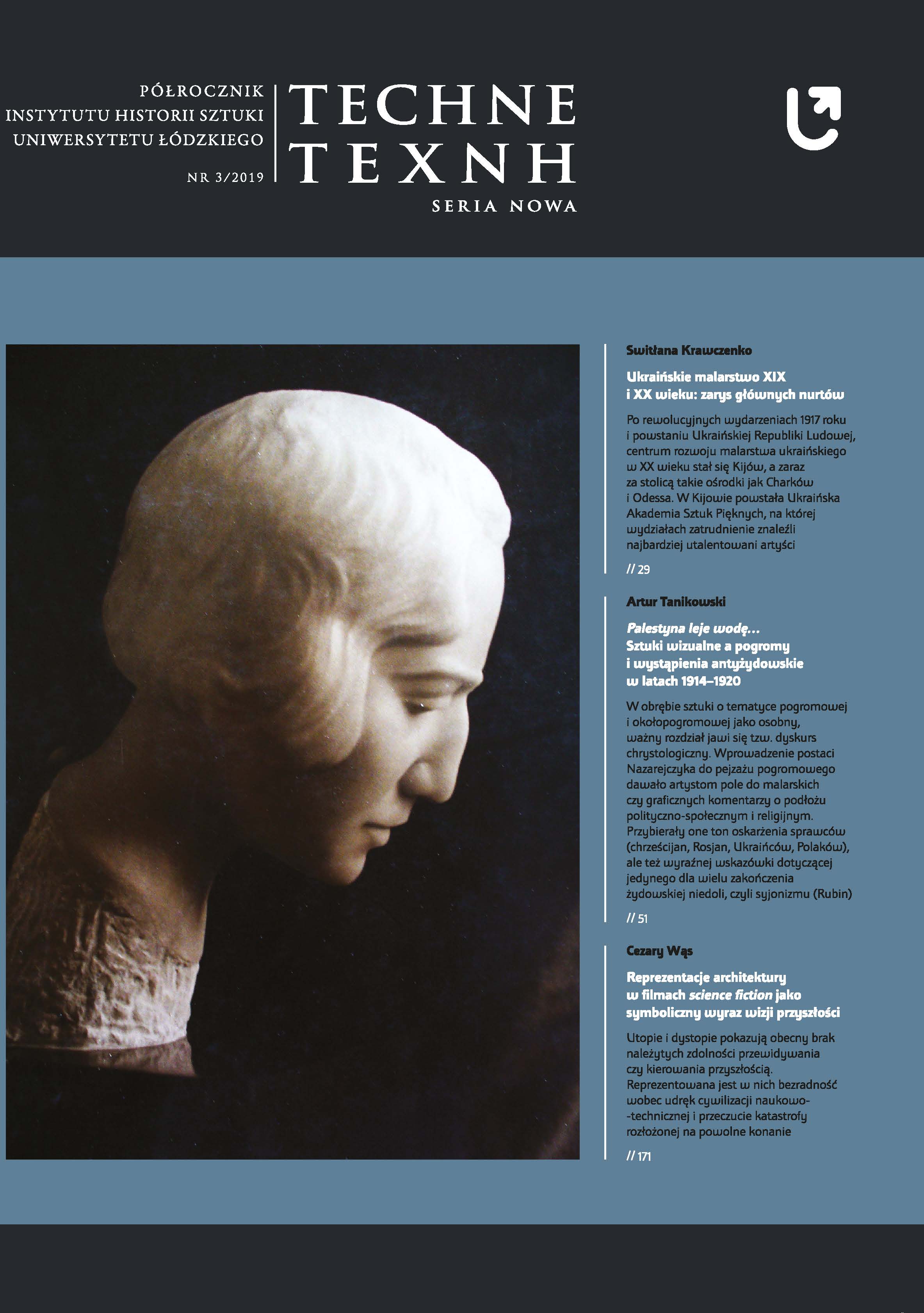Maria Lednicka-Szczytt – kariera polskiej rzeźbiarki we Włoszech, 1924–1934
Maria Lednicka-Szczytt – career of a Polish sculptress in Italy, 1924–1934
Author(s): Katarzyna Nowakowska-SitoSubject(s): Visual Arts
Published by: Wydawnictwo Uniwersytetu Łódzkiego
Keywords: female artists;sculpture;female sculpture;Polish art 1st half 20th c.;Polish emigration
Summary/Abstract: The work of Maria Lednicka-Szczytt (Maryla Lednicka), a student of Antoine Bourdelle, who in the interwar period was considered one of the most famous Polish artists abroad, is basically unknown today. In the reconstruction of the artistic biography, I focus on the Italian period as the most fruitful in her career.I assumed 1924 – the year of the artist’s first individual exhibition at the Pesaro Gallery in Milan and 1934 – the date of the first individual exhibition at the Wildenstein Galleries in New York, initiating the transfer of the artist’s studio overseas, as the border dates of this period.Born in Moscow, the daughter of Alexander Lednicki, one of the most important Polish politicians in tsarist Russia, she was noticed early as an efficient organizer and active participant of Polish artistic life on the Seine. She gained evidence of official recognition in the form of friendly reviews of popular critics (such as Woroniecki or Vauxcelles), or memberships: 1921 of Salon d’Automne, in 1925 of the Warsaw TZSP. In the early 1920s, she began working with Adrianna Górska (Adrienne Gorska), sister of Tamara Łempicka, with whom she designed fountains and street furniture, as well as the tombstone of the Lednicki family at the Powązki Cemetery in Warsaw (1923–1925).The Italian period, during which Lednicka created many portraits of personalities from the world of art, aristocracy and politics, was marked by the then sculptors’ protectors – the Teoplitz: Józef (Giuseppe), from the Warsaw family of the Jewish bourgeoisie, the influential president of Banca Commerciale Italiana, and his wife – star of the Krakow stages around 1900 and traveler – Jadwiga Mrozowska, ran an artistic salon in Milan promoting young artists. Friends of d’Annunzio and leading figures of contemporary Italy, facilitated the success of their mentee, and also promoted talented women associated with her (Adrienne Gorska, Tamara de Lempicka).Collaborating in the 1930s on decorating several Italian ocean liners, Lednicka has fluently mastered the work in various materials – from favourite wood, to different types of stone, bas-relief and decorative panels. Artistic achievements that today has completely dispersed (in Polish museums there are only 3 sculptures) and been forgotten, today would be impossible to compile if not for the archival materials transferred in the 1960s by the artist’s brother – Wacław, to the National Museum in Warsaw.Operating in various countries and environments, Lednicka has always been an ambassador of Polish culture, exhibition organizer and participant of events. In 1932 on board the ship – Conte di Savoia – for which she created a bust of the wife of the heir to the throne, Princess of Piedmont, made her first trip to America, which brought fascination with this country and the decision to move overseas. The outbreak of World War II, radically changing the face of the world in which Lednicka had a recognized position, brought a collapse of health, depression and suicide in 1947. Although the rudimentary preservation of Lednicka’s work, today makes it difficult to restore its permanence in the history of Polish sculpture of the twentieth century, the reconstruction of the artistic biography of the sculptor seems to complement in many respects the image of the era in which she worked. It brings out of the dark connections and unexpected relationships, enriching the image of the Polish interwar period. Like litmus paper or a missing piece of the puzzle, the restored presence of Lednicka allows to read the hidden senses of a wider structure.
Journal: TECHNE. Seria Nowa
- Issue Year: 2019
- Issue No: 3
- Page Range: 81-106
- Page Count: 26
- Language: Polish

